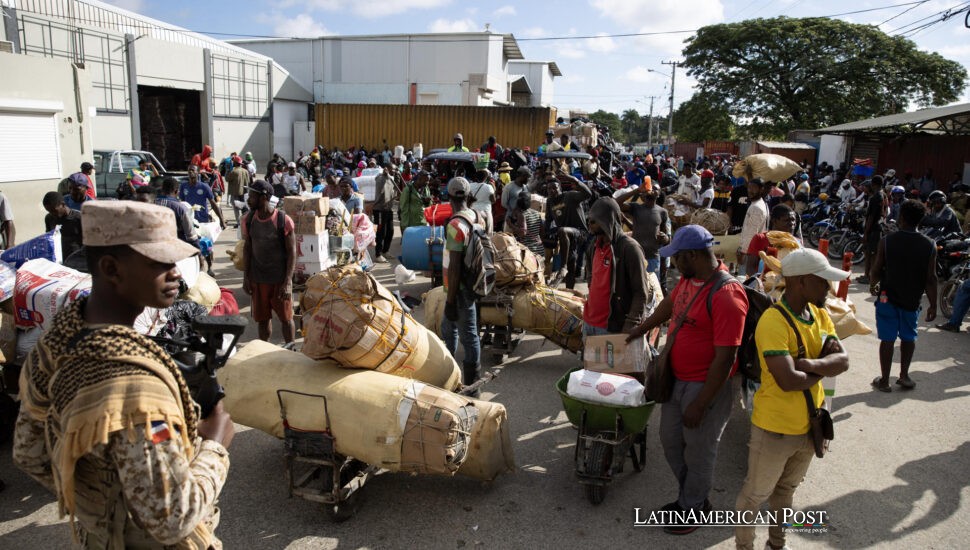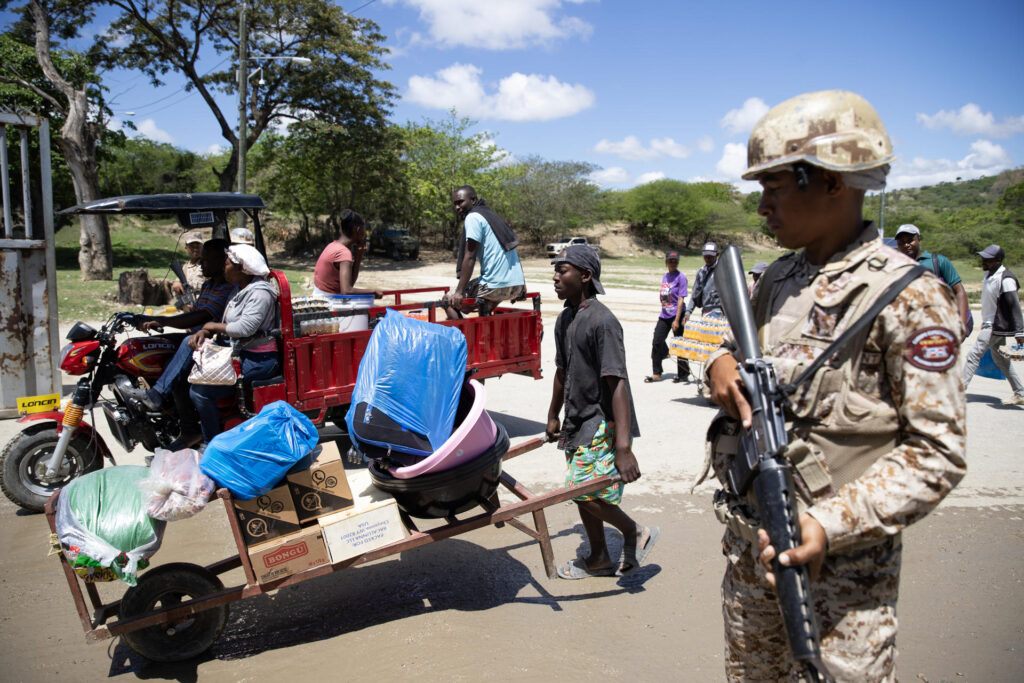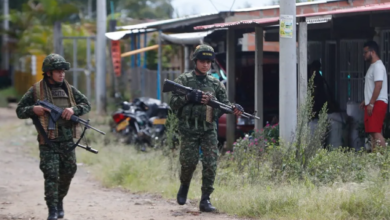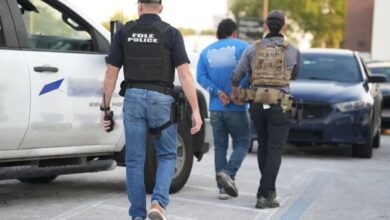Haitian Violence Stalls Dominican Cross-Border Commerce

In the once-busy border town of Elías Piña, Dominican Republic, the daily flow of trucks into Haiti has plummeted. Sellers now eye the horizon warily, fearing reports of armed gangs advancing in nearby Haitian villages and destabilizing their long-established trade.
An Alarming Decline in Commerce
Just months ago, Elías Piña thrived on cross-border transactions every Monday and Friday. At dawn, authorities would open the gates, allowing Haitian buyers and Dominican sellers to mingle in a bustling open-air market. Yet recent unrest—marked by gang takeovers of Haitian communities like Mirebalais—has drastically curbed activity. “A month ago, nearly 400 trucks rolled out loaded with goods,” a Dominican soldier tasked with monitoring the market told EFE. “Now, maybe 40 pass on a busy day.”
Seasoned merchant Jaime Peguero, who has been selling wholesale flour, cooking oil, and corn to Haitian clients for 13 years, called the drop “devastating.” He told EFE, “Our sales have plummeted by 90%, all because these armed groups took over areas close to us: Mirebalais, Las Caobas. People are scared to drive in with trucks full of merchandise.” Fewer Haitian buyers dare to venture across the border, forcing goods to be ferried by smaller vehicles or on foot. The thriving exchange that once sustained families on both sides of the frontier has stalled.
Uncertainty looms. The Dominican Foreign Ministry publicly acknowledged that instability in Haiti poses a “severe threat” to national security. During a UN Security Council session, Foreign Minister Roberto Álvarez highlighted more than 5,600 deaths linked to criminal bands in Haiti last year alone. With gunmen reportedly occupying the Haitian city of Mirebalais—just 50 kilometers from Elías Piña—Dominican authorities worry that gangs could push further. That possibility weighs heavily on local residents and traders, leaving them to wonder if the once-thriving market can survive.
Personal Stories of Fear and Loss
For many Haitians making the journey, the livelihood risk is immense. “We used to drive through with big trucks, but now we come on foot or by motor taxis,” Haitian vendor Anthony Félix told EFE, explaining that previously, he sold thousands of Dominican pesos in goods. “The gangs have taken Mirebalais, so people are terrified. No one wants to be robbed or worse.” He described how entire families avoid traveling, uncertain whether they can safely reach home again. Meanwhile, deportees like Magaly Marcelina, who spent 26 years in the Dominican Republic, also scramble to adapt. “After these gang attacks, we see mothers and kids sleeping out in the hills,” she said. “I pray they don’t come to my town next.”
Under oppressive midday heat, Marcelina sets up her stall, hoping for a sale that rarely materializes. “We used to earn a decent living. Now we can’t sell much,” she told EFE. The owner of her booth hands her a paltry 300 pesos (about 5 dollars) at day’s end—enough for some food and a bus fare back to Haitian territory. The cyclical nature of her routine—tied to an uncertain border—mirrors the struggles of many Haitian migrants.
Dominican commerce agent Peguero acknowledges the scale of the fear. “What if these criminals march to the border gate? We rely on our army and a wall, but fear remains,” he said. Soldiers from the Specialized Corps for Border Security (Cesfront) patrol the area. Roving eyes linger on Haitian arrivals, ensuring they carry no contraband or weapons. On the market’s dusty streets, watchful men in uniform remind everyone of the stakes if lawlessness crosses the dividing line.

Cross-Border Solidarity Versus Looming Instability
The twin markets on either side of the frontier have long bolstered each other’s economies. From fruit and grains to textiles, essential goods traverse a short distance in normal times. Changes in conditions have effects on both sides. Those who sell and depend on demand from Haiti must reduce the number of goods they offer. Each unsold amount of flour or unused vegetable creates losses. For their part, Haitian communities experience constant shortages. A reduced number of goods arrive, but prices go up. Félix stated, “We only come to get food that is needed. If there are no trucks, we have to carry items by hand. This is hard.”
Despite the tension, many cling to hope that the situation might stabilize. Some recall previous security upheavals after natural disasters or political crises in Haiti that eventually eased, allowing cross-border trade to resume at full speed. However, those episodes never involved such a wide, persistent wave of gang control. The Haitian government offers little help, and its weak police adds to a sense of despair. At the same time, the Dominican government made the fence stronger, told soldiers to watch, and cautioned Haitian citizens about travel dangers.
Area residents want continuous teamwork plus a focus that considers all nations. Some people prefer a detailed plan: help for people along with better Haitian police could reduce the difficulty for people trapped in the fighting. However, others believe that only direct help from external organizations stops the groups’ influence. Common anxieties persist in parallel with revenues for both Haitian consumers and Dominican vendors, as they stay unsteady. Peguero said, “The border trade must not be permitted to stop. It is our sole method to earn funds.”
Also Read: Brazil Races to Ready Belém for Climate Summit as Locals Wait
A Dominican soldier at the border entrance observes little activity and scarce goods – he shows uncertainty about the future. He privately said, “Situations change. Individuals worry. There is hope for peace.” Observers agree that, for families along the boundary, any flicker of calm could reopen economic lifelines. Until then, throngs of trucks, once a hallmark of success, will remain a distant memory in the deserted market of Elías Piña.





